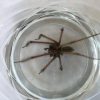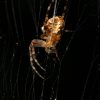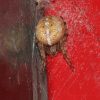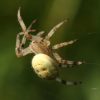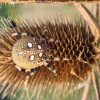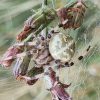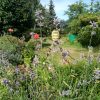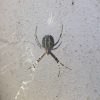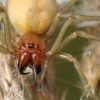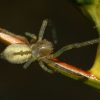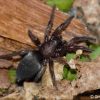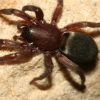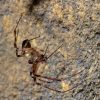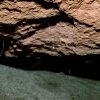
Členové ČAS na 122. arachnologickém semináři v Brně
O společnosti
V rámci 102. arachnologického semináře, konaného 11.10.2008 v Praze, byla na své valné hromadě společnost založena jako organizace, nahrazující Arachnologickou sekci při České společnosti entomologické. Při svém vzniku čítala 51 členů.
Česká arachnologická společnost je sdružení lidí se zájmem o pavoukovce. Vedle profesionálních vědeckých pracovníků v oboru arachnologie jsou jejími členy amatérští zoologové, chovatelé, fotografové a milovníci přírody.
Společnost pro své členy pořádá odborné semináře a exkurze a vydává sborník Pavouk, ve kterém informuje o aktuálním dění v oboru.
Členem se může stát osoba po dosažení věku 15 let, se členstvím je spjat členský příspěvek 300 Kč ročně (150 Kč pro studenty). (Viz. Stanovy)
Členové jsou pravidelně informováni o probíhajících a plánovaných akcích, o dění v české i mezinárodní arachnologické komunitě, jsou jim zasílána aktuální čísla sborníku a mají přístup k databázi literatury.Registrace je možná zde.
Běžní pavouci
Eratigena atrica (C. L. Koch, 1843)
pokoutník tmavý
Pokoutník černý, Eratigena atrica, je odjakživa nejobvyklejším pavoukem, kterého lidé nacházejí doma ve vaně, ze které nemůže vylézt.
Araneus quadratus Clerck, 1757
křižák čtyřskvrnný
Běžný druh křižáka vyskytující se na lučních biotopech. Momentálně probíhá mapování tohoto druhu. Děkujeme za Vaše nálezy.
Argiope bruennichi (Scopoli, 1772)
křižák pruhovaný
Krásný pavouk ze středozemí, který se v posledních desetiletích úžasně rychle rozšířil na našem území. Samice je nápadná, žlutě a černě pruhovaná, jako sršeň. Samec je mnohem menší,...
Cheiracanthium punctorium (Villers, 1789)
zápřednice jedovatá
Zápřednice jsou velcí pavouci, kteří můžou kousnout. Zápřednice jedovatá, Cheiracanthium punctorium, se vyskytuje v teplých oblastech našeho státu (Polabí, střední a středozápadní Čechy,...
Meta menardi (Latreille, 1804)
meta temnostní
Meta temnostní, Meta menardi, je dnes řazena do čeledi čelistnatkovitých, do velmi blízkého příbuzenstva křižáků (dříve se jí říkalo křižák temnostní). Je to hojný druh obývající...
Nejnovější publikace
Roztoči v člověkem ovlivněných a vytvořených půdách
Pavouk 59 (12/2025)
Autoři: Anděla Šimečková, RNDr. Antonín Kůrka, Mgr. Antonín Roušar, Mgr. Eva Líznarová, Ph.D., Mgr. Ivana Hradská, Mgr. Jan Dolanský, MUDr. Kryštof Rückl, RNDr. Milan Řezáč, Ph.D., Mgr. Ondřej Machač, Ph.D., Pavel Bezděčka, Pavel Krásenský, Peter Gajdoš, RNDr. Petr Dolejš, Ph.D., Petr Veselý, RNDr. Vlastimil Růžička, CSc.Druhy: Atypus affinis, Erigone dentosa, Megalepthyphantes nebulosus, Panamomops szinetari , Nemastoma bidentatum sparsum, Pholcus alticeps, Leiobunum sp. A
Pavouci České republiky; Taxonomické změny; Víme, koho máme ve znaku ČASu?; Panamomops szinetari (Araneae: Linyphiidae), nový druh pro Česko a Slovensko; panonský stepní relikt, expandující teplomilný prvek, nebo zavlečený invazivní druh?; Významné faunistické nálezy pavouků na mokřadech Jižní Moravy; Přehlížená domácí plachetnatka; Pholcus alticeps Spassky, 1932 v Krušných horách. Po druhé…; Výskyt pavučenky Erigone dentosa (Araneae: Linyphiidae) v Krušných horách; Nová lokalita sekáče Nemastoma bidentatum sparsum (Opiliones: Nemastomatidae) v ČR; Zajímavé nálezy sekáčů aneb jak občanská věda pomáhá našim opilionologům, část druhá; Čekání na odlet; European Congress of Arachnology – Zadar 2025; Novodobé určovací semináře; Česká bibliografie; Nové knihy
Zajímavé nálezy sekáčů aneb jak občanská věda pomáhá našim opilionologům, část druhá. Interesting finds of harvestmen or how citizen science helps our opilionologists, part two. Pavouk 59: 20–22 (in Czech, English abstract)
Autoři: Pavel BezděčkaDruhy: Leiobunum sp. A
Nová lokalita sekáče Nemastoma bidentatum sparsum (Opiliones: Nemastomatidae) v ČR. New locality of harvestmen Nemastoma bidentatum sparsum (Opiliones: Nemastomatidae) in the Czech Republic. Pavouk 59: 18–19 (in Czech, English abstract)
Autoři: Mgr. Antonín RoušarDruhy: Nemastoma bidentatum sparsum
Výskyt pavučenky Erigone dentosa (Araneae: Linyphiidae) v Krušných horách. Occurrence of the money spider Erigone dentosa (Araneae: Linyphiidae) in the Ore Mountains. Pavouk 59: 17–18 (in Czech, English abstract)
Autoři: Mgr. Antonín RoušarDruhy: Erigone dentosa

